Hiking alone can be an incredibly rejuvenating experience. Still, it’s not always a good idea. Hitting the trail without a hiking buddy can mean the difference between safety and life-threatening danger. Here are eleven ways to find the best hiking partner to keep you safe out there.
It’s tempting to head out to the trail on your own. Sometimes you want to get away and disappear into the wilderness to prepare yourself for another week of your busy life.
However, it’s not always the safest thing to do. People hiking together face much lesser risks of getting lost and being injured while outdoors. Here are a few tips to get the best hiking friends to build lasting memories and keep you safe as you enjoy nature together.
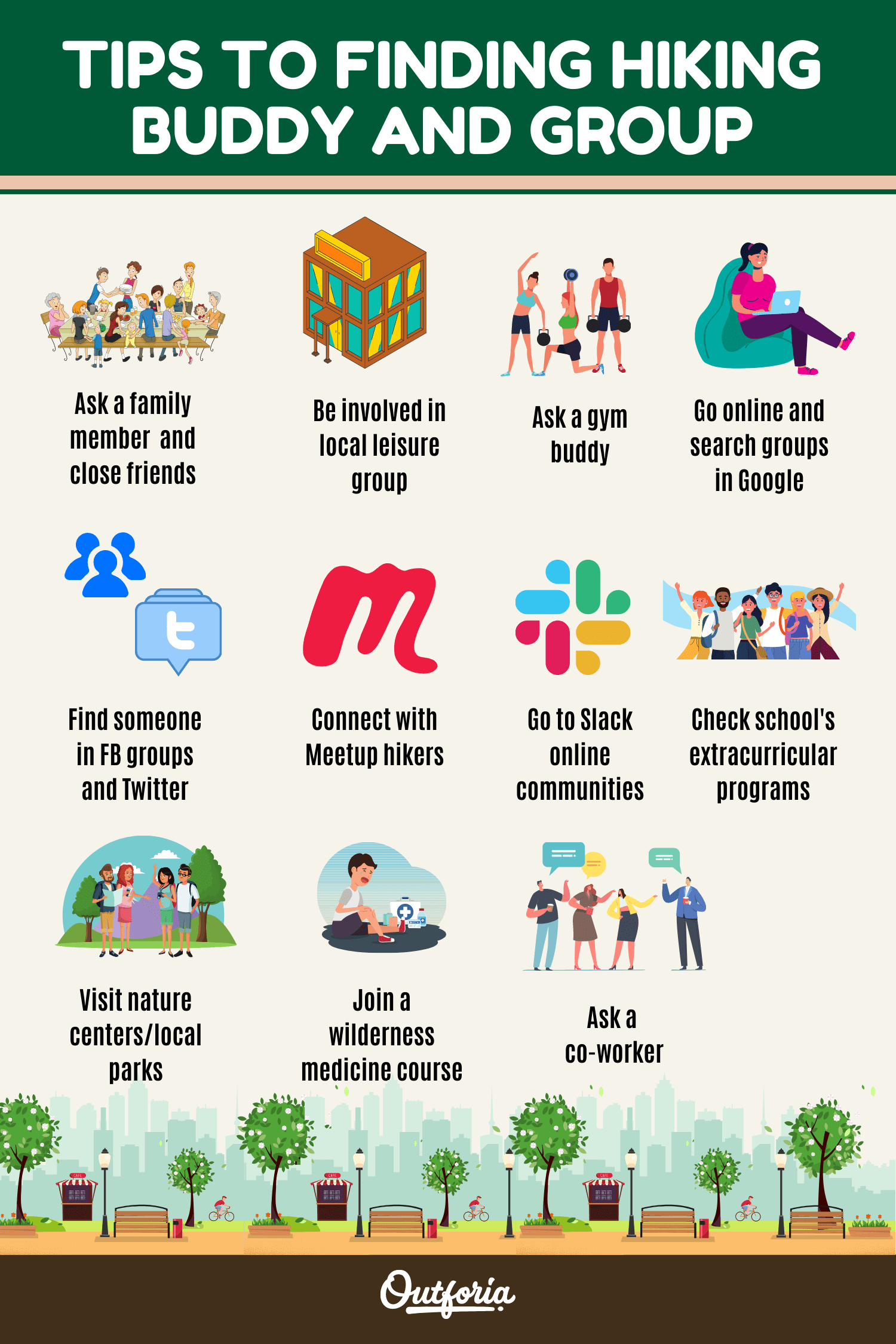
Going Hiking? Here’s Why You Should Bring a Hiking Buddy

Have you ever talked to an experienced hiker at some point in your life? Odds are they’ve warned you never to go hiking alone. While this is a solid piece of advice, it’s not always applicable. For instance, imagine you’re heading out to an easy, heavily- or moderately trafficked trail. If someone knows your location, then it’s fine to go alone.
However, you need to bring a buddy if you’re planning on anything moderate or higher or with minimal traffic. Plus, if there is any wildlife in the area, such as bears, coyotes, or cougars, it’s best to bring a friend along.
Consider the terrain, too. For example, if the trail has many cliff edges or tall drops, you probably don’t want to journey out there alone. Most of the unintentional deaths in National Parks are because of accidental falls with 245 deaths in the last ten years.
Further, half of all medical deaths (49%) in NPs happened while the person was hiking or doing another physical activity. Going hiking alone is risky. You won’t have anyone present to care for you or run to get help if you get hurt or go unconscious. Plus, no one will be present to help if you’re unable to escape environmental hazards.
Plus, hiking alone can increase your chances of getting lost. Between 200-2010, 62% of Yosemite National Park Search and Rescue cases were for missing hikers. Almost two-thirds of them were alone.
Going hiking with a buddy can improve your chances of survival if anything goes wrong on the trail. Apart from this, hiking in a community improves your experience and helps create lasting memories with people you care about.
Here are eleven ways to find the perfect outdoor companion for you.
11 Ways To Find A Hiking Buddy Or Hiking Groups
1. Ask Around to Family and Friends
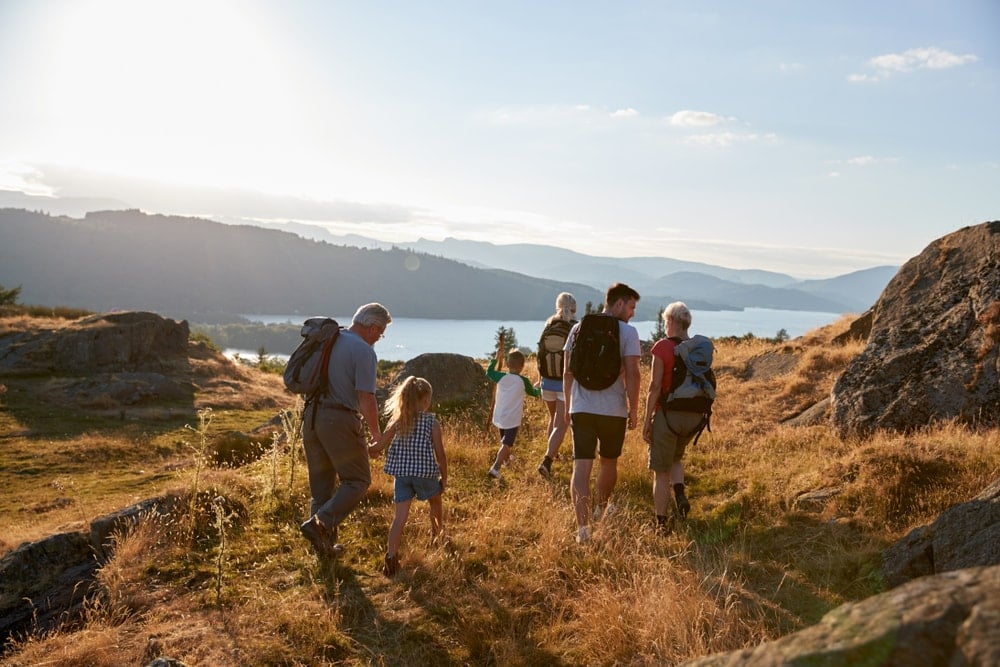
This is the good ole fashioned way of getting someone to join you on a hiking adventure. Odds are that you have someone in your group of closest friends and family who shares at least a few of your interests. One of those is bound to be hiking or getting outdoors, right?
Some things to consider when you’re asking your relatives and friends if they want to join you include:
- Their physical fitness. By no means does anyone have to have a six-pack or giant calf muscles to hike a trail. Still, they should be able to walk for extended periods without getting too winded. Choose “easy,” “moderate,” or “advanced” trails according to your buddy’s physical capacity.
- Environmental sensitivities. Be sure to ask your potential hiking buddy if they have any allergies or need special accommodations when you’re on the trail. For example, if it’s springtime, they might want to take a rain check because of severe allergies. People with sensitive skin will need to take extra precautions with sunscreen and hats. These are some of the hiking essentials you need to keep in your backpack on every hiking trip.
- Experience. It’s perfectly fine to bring a newbie along with you on a hiking trip. However, you should discuss their experience level and plan your trip accordingly. If they’ve never hiked much before, go for a short trail with flat terrain. Additionally, make sure they know how to behave in case an animal approaches you.
Hikers often prefer to go out with family and friends because of the safety factor. To put it bluntly: Venturing into the woods with a random group of hikers that are unknown to you is rarely a good idea. Chances are against the possibility that a recently acquainted friend won’t be out to get you in the backcountry. Still, you shouldn’t take any chances.
2. Get Involved with Local Hiking Groups and Clubs Near You
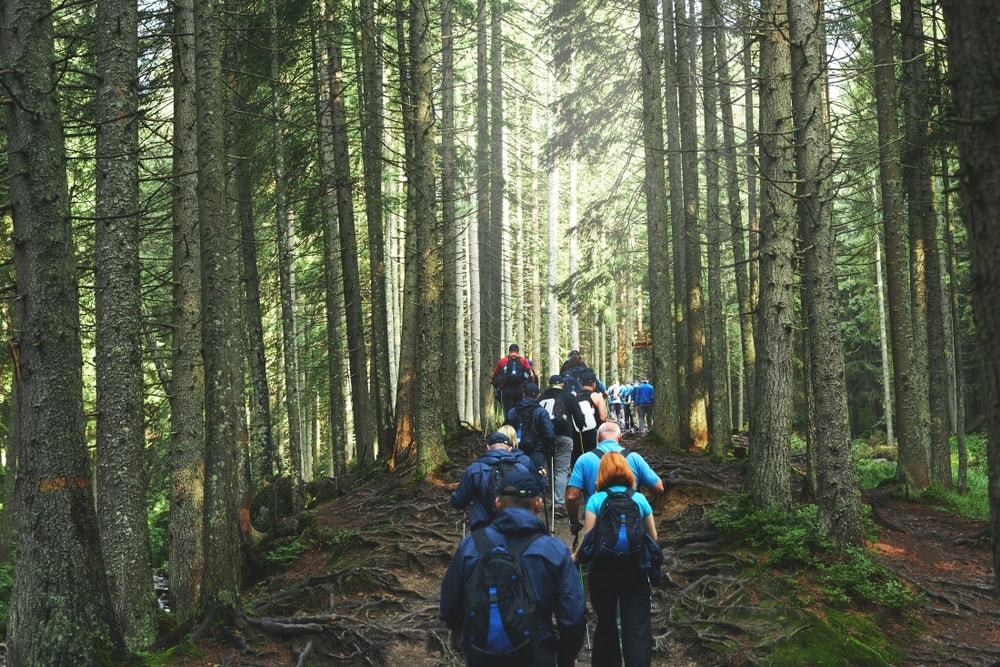
Getting involved in local leisure groups is one of the best ways to find a hiking buddy if you’re new to an area. You’d be surprised at the networking and socializing potential in recreational groups in your town or county.
Admittedly, though, these organizations are more challenging to find for adults than they are for children. Adults will have better luck making connections using the next two strategies. Still, one place that both adults and children could start their search is the town civic center.
Not every town or city has one of these community centers, but if yours does (like my hometown), take advantage of it! All the local residents are invited to the seasonal events held in civic centers. Find one that is most closely related to outdoor sports and recreation. Look for sign-ups for hiking trips, fliers for regular gatherings, and similar documents.
Adults should go around, chat, and introduce themself to other attendees. This will give you a feel for what everyone’s interests might be and how that could connect to your hobbies. For kids and teens, you’ll have a bit more flexibility in your methods for finding a hiking community.
The best option that immediately comes to mind is Boys’ and Girls’ Clubs. These are very welcoming spaces for teens and younger kids who need socialization and engaging recreational activities.
For example, one of my favorite activities from organizations like this was when a group of us visited a local park for a riverwalk. It was short and sweet and not too physically demanding.
Ask the staff and management about their program and whether they’ll have a youth hiking community available for your child to join.
3. Join a Gym and Participate in Hiking Events
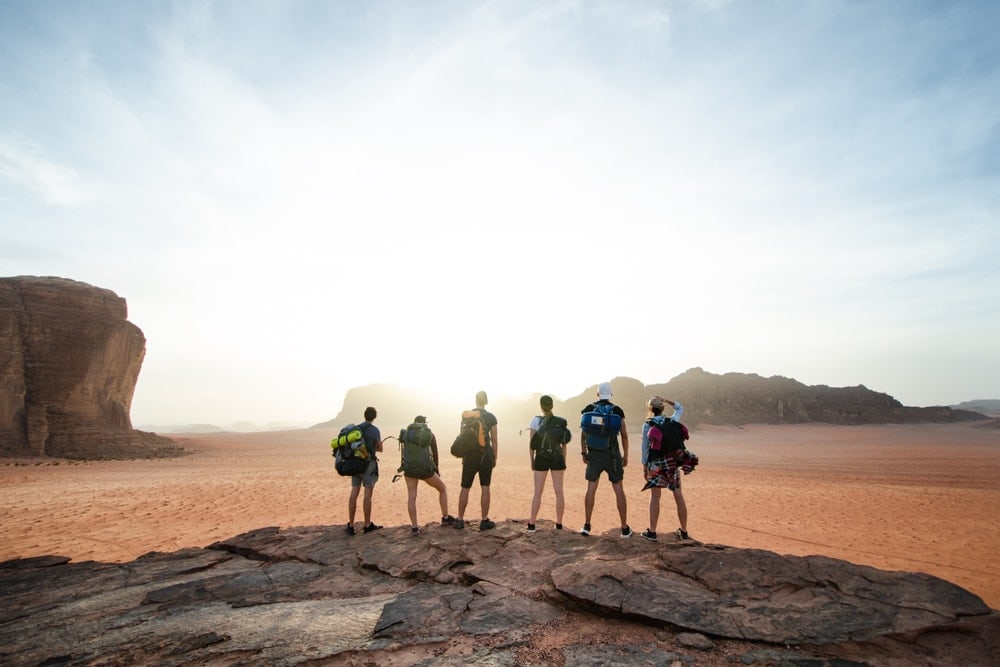
Yes, another one of the millions of reasons why you should get a gym membership. You can find a reliable group of hikers and company to join you on the trail. Gyms often host activities like this for their members. They’ll also set up meeting times and full itineraries for some outings.
Now, this might not always be available for hiking, particularly, but it’s a good place to start. As a bonus, many gyms have rock-climbing walls and activities. So, if you want to combine your hiking and climbing (as climbers often do) warm-ups before you head out, gyms are the perfect place to do so.
Hiking events for gym-goers are beneficial for both members and the facility. Even the Fitness Business Association suggests gym management consider hosting these outings. They build loyalty and connections in their community and, of course, generate revenue.
Another great thing about going hiking with your gym group is the opportunity to physically prepare for the trip with each other. You can share tips and tricks related to staying in shape for the upcoming season. Plus, you can swap techniques on breath regulation and even discuss the best trail foods to boost energy and maintain a healthy body mass index (BMI).
Plus, what gym rat would refuse an opportunity to make some gains? Hiking is just another form of exercise. More people are gravitating toward working out in the great outdoors anyway. It’s turning out to be a much safer alternative. Plus, it exposes you to the many natural health benefits from sunlight, being outside, and connecting with the environment.
4. Get a Hiking Buddy Online
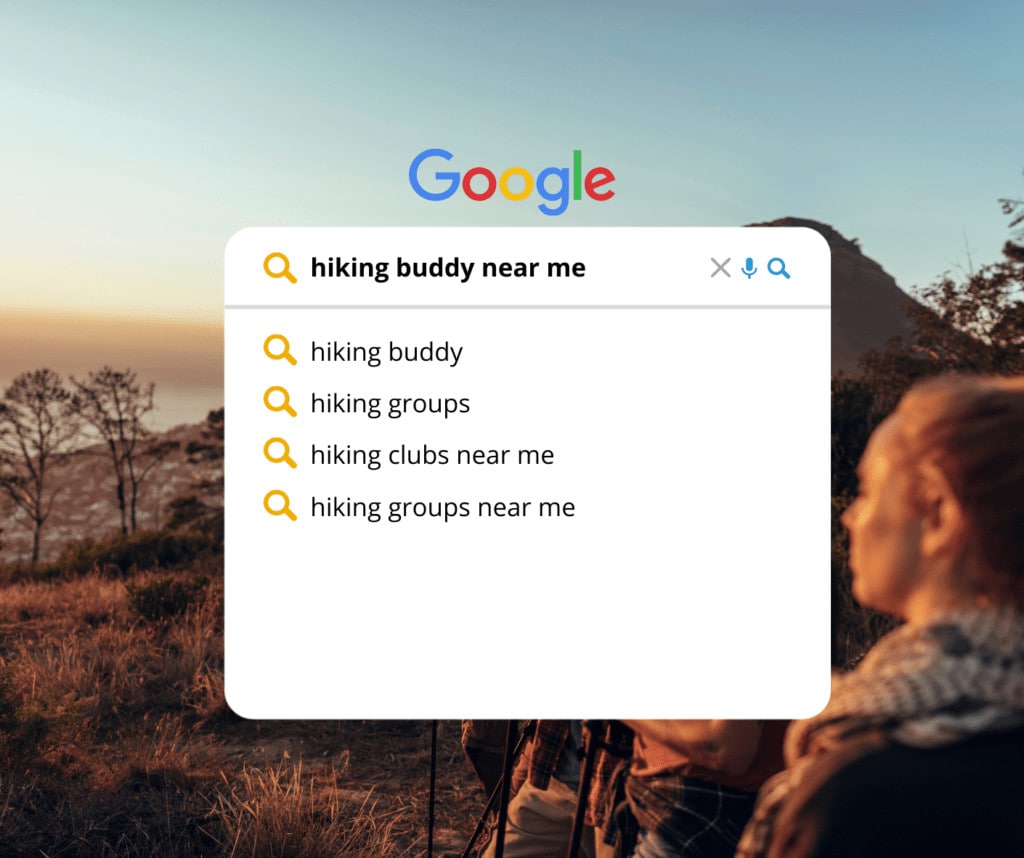
One of the easiest (and fastest) places to find a hiking buddy is online. A quick Google search of “hiking clubs near me” or “hiking groups near me” will get you the info you need. The digital sphere is becoming one of the leading avenues people use to communicate and even forge new friendships.
As The State Press noted, “[The] days of handwriting letters and spending money on postage are over. What social media sites offer is the chance to get to know people who share your interests.”
Still, despite how great this socializing tool is, only about 20% of people meet their internet friends in real life. So, keep in mind that not everyone who expresses interest in going hiking with you will actually follow through with that. However, you could end up meeting a lifelong friend!
On that note, you’ll want to be very careful about the people who do follow up on their interest to be your hiking buddy. Before you set a time and place to meet up, here are a few things to do and ask yourself:
- Do some background research on the person. You don’t have to dig too deep into their history. A simple Google search will do. This will help you verify that the person is real and more than just a social media account. Plus, if they have any fishy public records, they’ll come up in your search.
- Meet at a well-populated, public place first. Don’t jump into hiking with someone you met on the internet. The first time you meet shouldn’t be on the trail. There aren’t enough safety precautions in a meetup of that nature. Instead, invite the person to a coffee shop, a restaurant, or anywhere else you can get to know each other in safety.
- Tell someone where you plan to meet and hike with this person. Before you head out to meet or hike with your online friend, give someone your location. This will ensure that someone can get to you without losing time to a lengthy search if anything goes wrong.
You’ll have better luck visiting certain parts of the internet to find hiking friends than others. For example, you can get lots of hiking destination ideas from Pinterest. Yet, you might not get in touch with too many hiking buddies on that platform. Instead, turn to other social media sites like Twitter, Facebook, and others described below.
5. Find Someone on Twitter or Facebook
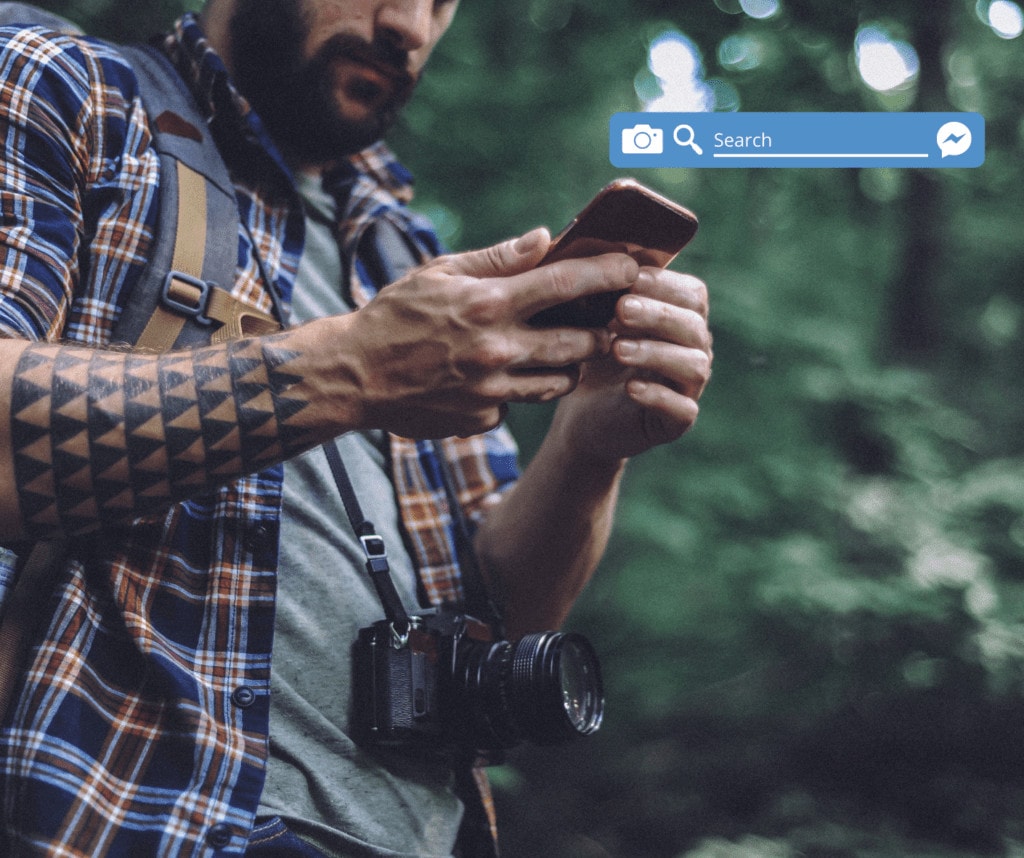
For one, Facebook has the most users in the world compared to all other social media platforms. Since the platform’s so crowded, you’ll have no problem finding a suitable hiking buddy. Especially if you join groups like:
Facebook groups tend to be very active. So, your post or comment requesting someone to hike trails with friends with should get a response within a few minutes or hours. If you don’t have any luck on this platform, head to Twitter. Here, you can click on hashtags to find millions of people who share your interests.
You can peruse through all kinds of hashtags until you find that perfect niche community. One of the best times to use this technique is around Earth Day and National Hiking Day. Around these times, lots of people are taking the time to reconnect with nature and are eager to join others in the outdoors.
6. Connect with Meetup Hikers
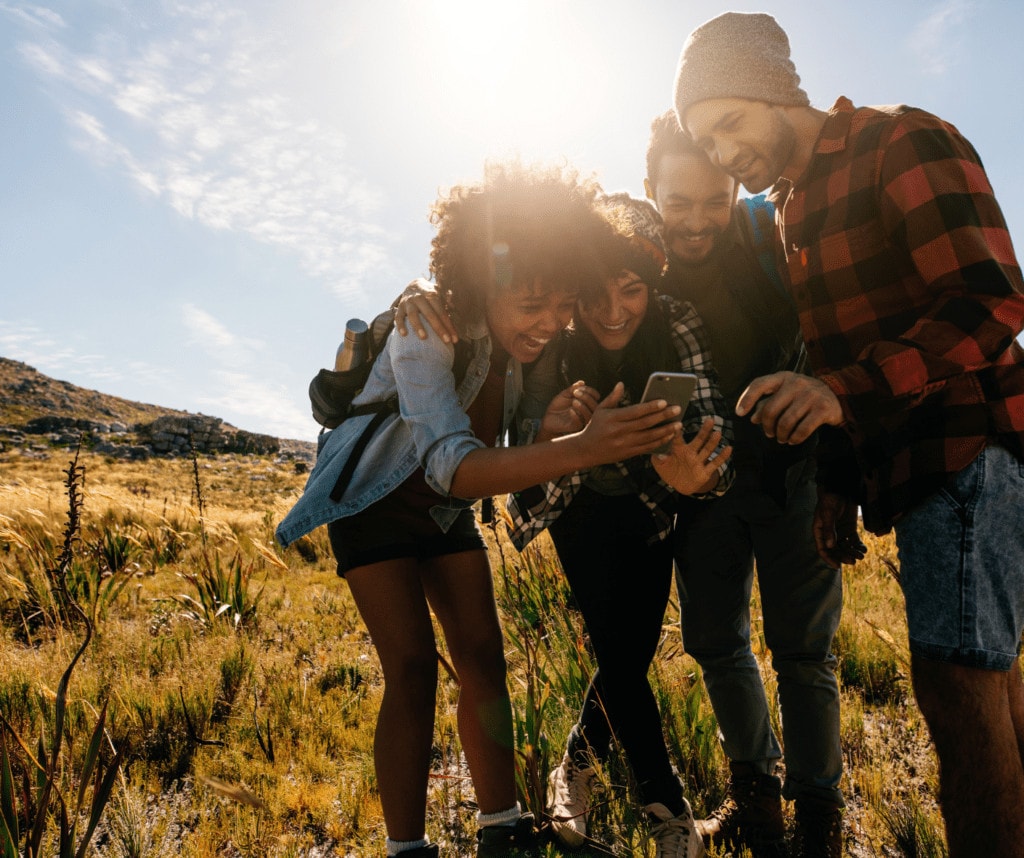
Another great platform to take advantage of is Meetup. Again, this is another one that is useful for people who are new to an area. It’s a great, low-stakes way to cultivate new friendships and develop a socializing routine. Plus, it’s a really easy way to invite a large number of people to a single event.
You can use meetup in a few ways:
- Search through the available groups. Look at the topics, tags, members, and description. The description should provide three main pieces of information. These are: the group’s purpose, who the group is designed for, and the group’s activities. After reading this information, do you feel welcome in that Meetup group? If so, join!
- Note: Groups regularly participate in events together, whether they’re online or in person. By joining a group, you’ll get access to future social activities with those members.
- Find upcoming events. Don’t want to commit to a group quite yet? You can go straight to selecting hiking meetups and events that match your interests. Simply search by “Calendar” instead of “Groups,” and you’ll find events that are nearby and coming up soon.
- Create a group or event. Sometimes, you don’t want to just sit back and wait for the event or group to come to you. You just have to take the reigns and make things happen yourself. Creating a group or event is best for those who know the area and the trails they’re considering. You should also be comfortable enough to lead a hike if need be.
In the event details, give your prospective attendees as much information as possible. Include the trail’s location, length, difficulty, expected environmental conditions, and meet time. If you’re feeling ambitious, you can even suggest what items they should bring along.
Just think about the kinds of details you would appreciate as a new person in the area. Make sure to offer those to your future hiking buddies.
7. Chat in the Hikers and Backpackers Slack Channel
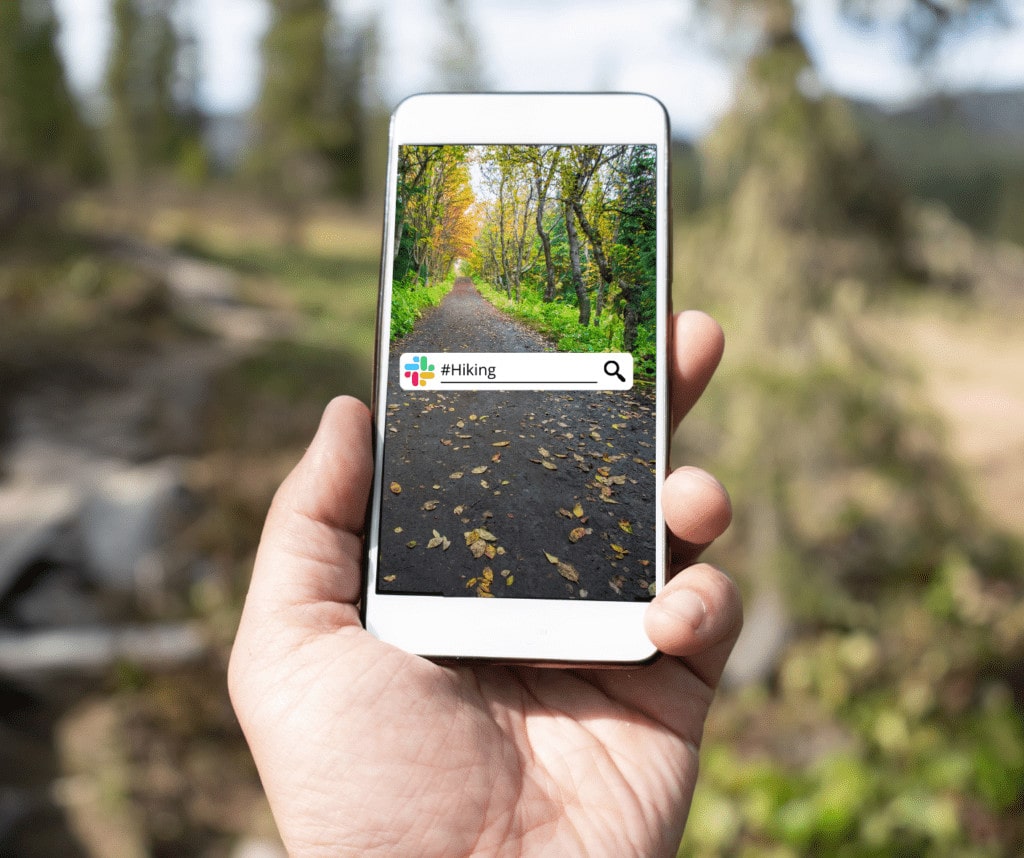
Slack isn’t all about work and no play. With a little bit of searching, you can find some great online communities chock-full of people who would love nothing more than to join you on the trail. There are so many Slack channels for hobbies and professions alike. Yet, one that thousands of people love is “Hikers & Backpackers.”
There are over 2,300 people on this channel and lots of freedom to discuss anything you need. Feel free to join the main chat, or hop into the Gear Talk channel. Here, you can ask more specific questions about what you should bring on the trail, a huge asset for beginners.
One of the best things about joining this Slack channel is that you have people from all sorts of backgrounds and experience levels. You can get a vast range of perspectives on your hiking questions if you’re a beginner. Members can even get input on outdoor travel destinations from experienced thru-hikers or backpackers from people across the nation.
However you prefer to use this network, remember to introduce yourself and make sure people know you’re there. Drop a quick hello and a brief description of your hiking goals and interests in the Introductions channel to get started.
8. Mingle in Social Scenes Around Local Colleges and Universities

Ah, the good ole days of living a few doors down from some of my best friends. Socializing was so much easier as a college student. Most of your friends live nearby, either on campus or in nearby apartment complexes. So, it’s easy to walk down the street or a few dorms down to snag someone to go on a hike with you.
Still, your friends won’t always be available to hike. Plus, you might want to branch out and expand your social circle a bit. In these cases, you should turn to the school’s extracurricular programs. These are the ideal places to get in touch with your peers who are also interested in hiking.
University-hosted hiking programs tend to be very beginner-friendly. The program coordinators will give you all the details you need to meet at the appropriate time and place. Additionally, they’ll typically throw in a “What to Bring” list to ensure everyone’s prepared for the trip. These events are highly inclusive, so you won’t have to worry about the trail being too challenging.
However, say you’re interested in advanced trails and still want to be involved with your school. If this is the case, try looking for an extracurricular program that is devoted explicitly to hiking or outdoor sports. Here, you might find people that want to accumulate more experience and graduate to higher-difficulty trails.
9. Visit Local Parks and Nature Centers
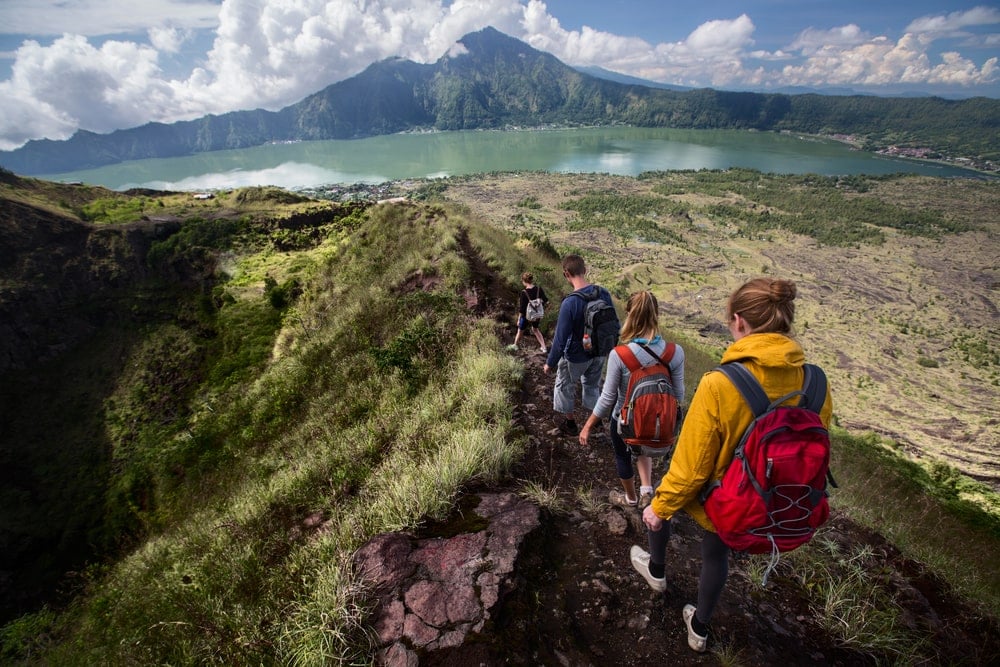
Almost 2,000 nature centers exist in United States’ communities, from rural to urban. Each of them helps cultivate meaningful, fulfilling relationships between community members and the natural environment where they live.
Only 62% of people meet the bare minimum requirement to reap these advantages. One of these is merely being aware of their local nature center’s presence. Slightly fewer (60%) had actually visited this center at least once, which is great news for aspiring hikers who need a buddy for the trail.
This means the majority of people in your area stop by the nature center at least once. So, you’ve got a strong chance of finding the perfect companion for your outdoor recreation.
Many experts in and adjacent to the profession have studied nature centers’ significance to determine what they offer to their local communities. Here’s what the studies show:
- A space to share quality leisure time with family and friends. Sixty-two percent of people say that they visit their parks and recreation facilities to “[hang] out with their family and friends.” This is especially the case for parents and Midwestern Americans.
- A chance to be closer to nature. Nowadays, the public is well aware of how spending time outdoors can improve their lives and wellbeing. To put it succinctly, recreational activities in nature can lower your blood pressure, help regulate your nervous system, strengthen your immune system, fight anxiety, and elevate your mood.
- Increase their physical activity. Besides driving, people use many transportation methods to get to their local park. They use rollerblading or skateboarding (4%), jogging (12%), biking (18%), and walking (49%). You’re already dealing with a physically active group of people – chances are you’re going to find a hiker somewhere in the mix!
Local parks are an even better place to find fellow outdoor enthusiasts. Estimates show that three out of every four Americans live within walking distance of a local park or recreational facility. Further, the average person visits the park or recreational institution more than twice monthly.
This should get you very excited about potential socializing opportunities! These stats alone show that most Americans have a strong affinity for the outdoors and nature. Because of how many people act on their outdoor-related interests, you’ll have an easy time locking down a backwoods buddy.
10. Enroll in a Wilderness Medicine Course
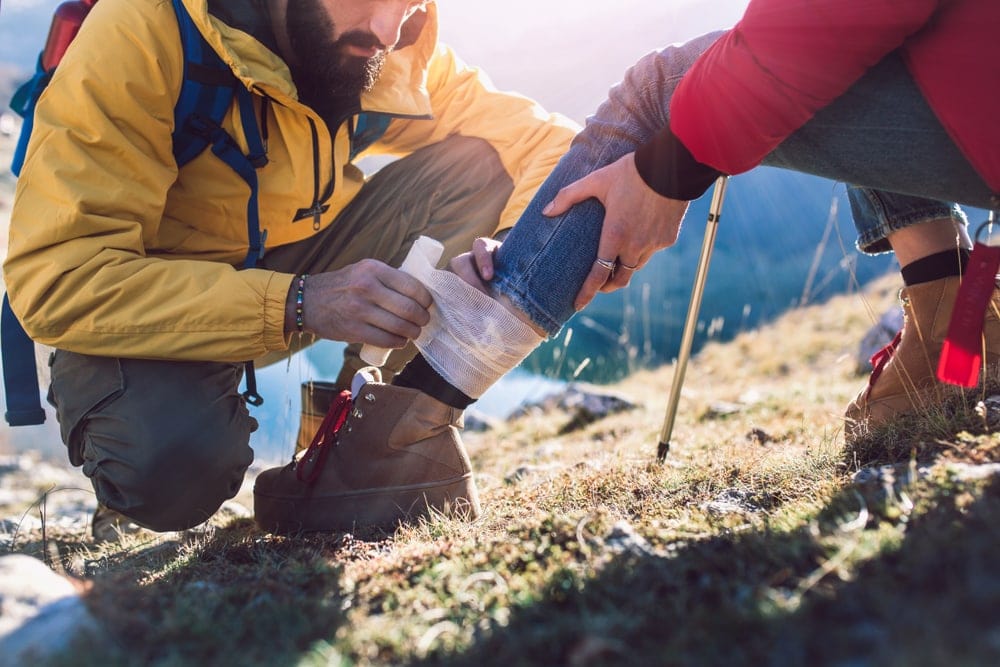
Admittedly, this is a pretty challenging one, but a practical option nonetheless. Be warned: wilderness medicine courses are intense commitments. This program is a full-on environmental safety course. It will teach you everything from when to distribute NSAIDs to how to keep a fellow hiker or backpacker alive.
If you want to take on a wilderness first responder (WFR) course to meet other outdoor enthusiasts, be prepared. Here are some of the most important things to know about WFR classes:
- They are expensive. Unless you work for a company that offers WFR classes as an employee perk or requires staff to enroll fee-free, you’ll have to save between $670-1,910+ to enroll. On the other hand, a wilderness first aid (WFA) course costs $170-500. These classes are only for serious, dedicated outdoor people.
- They take time. A WFR class would require you to take time off work. In some cases, you might even need to travel out of state to get the earliest availability. Be prepared to set aside one to two weeks for a WFR and a weekend for a WFA course.
- They need to be maintained. WFR certifications are good for three years. Before it expires, you’ll need to set up a recertification period. Fortunately, the price is much lower for recertifications than new enrollments. Although you will have a one-year grace period, it’s best to take care of it ASAP. Otherwise, you’ll have to pay full tuition again.
Enrollment in a WFR certification course is an excellent option for hikers that want to take care of multiple essentials at once.
For one, you’ll get incomparable education and training that could potentially save your life one day. More than 212,700 people visit emergency rooms every year for injuries they got on the trail. Needless to say, a WFR or WFA skillset will come in handy.
Secondly, you’ll meet with hikers, backpackers, and other outdoors folks who are just as serious about their sport as you are.
11. Invite Your Coworkers to Hike
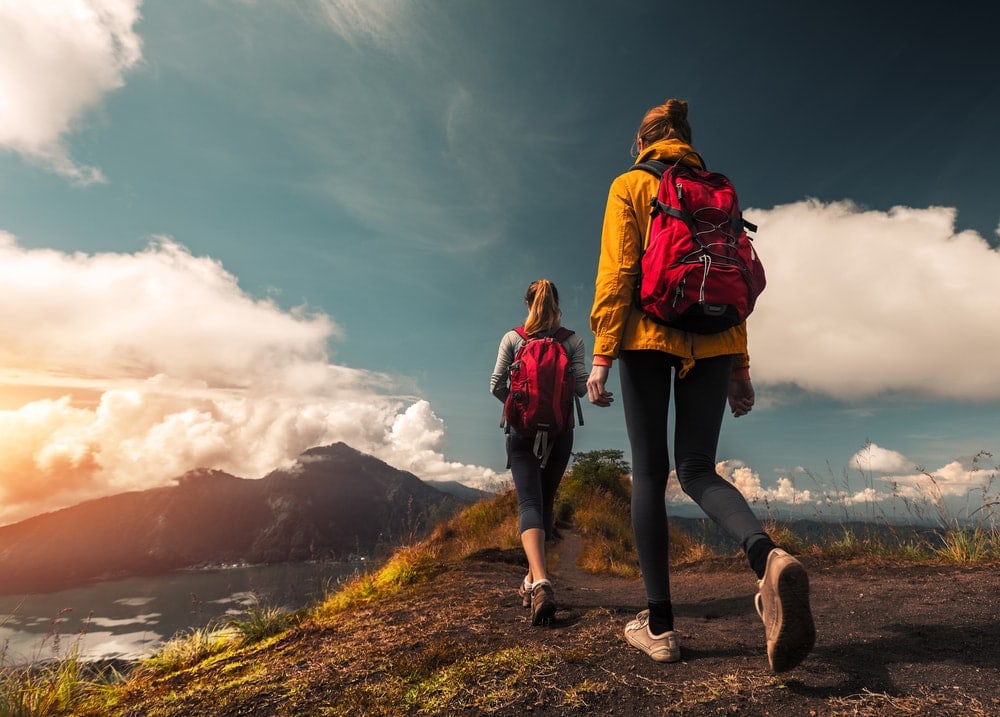
Alright, so you’re a busy bee with a full schedule and relaxation time that’s already accounted for. You might not have the time to get out there and find people that want to walk around in the woods or the mountains with you. No problem! You can still find a reliable hiking buddy at the office.
Don’t let those work clothes fool you. There is definitely someone in your company who’s been dying to get outside, smell the fresh air, and feel the crunch of fallen leaves under their feet. All you have to do is ask. You can approach a colleague at any time to invite them on a hiking trip.
However, it’s best to wait a while until you’ve established a relationship between you two. In other words, you don’t want to ask someone to join your hike on the first day (or maybe you do). Wait until you’ve worked on a few projects together. Better yet, until you’re at an employee retreat or another corporate event to invite them to the trail.
Spending time in nature with your coworkers will keep you safe while in the outdoors and improve your work environment as well. Studies show that quality time with your colleagues can yield the following advantages:
- Better collaboration based on a more intimate knowledge of one another
- Boosted employee morale due to healthier comradery with friends from work
- Less turnover since people can genuinely enjoy working with their colleagues
- Increased productivity due to a better mood in the workplace
Don’t be afraid to get out there. Even your office mates could use some time in the great outdoors now and then.
FAQs
Of course, you may have more questions about hiking alone! We’ve got the answers here.
Is it a bad idea to go hiking alone?
Hiking alone isn’t always a bad thing, but it’s not as safe as going with a partner. On your own, you can really envelope yourself in the gentle breeze and sounds of nature. Unfortunately, you’d also be in greater danger if you were lost or injured while hiking alone. No one would be around to support you or find help.
What to do if you get lost while hiking?
The most important thing you should do happens before you get to the trail. This step is to get a personal locator beacon (PLB) or a “spot,” as I’ve always known it. At the mere press of a button, a rescue team will have your location and be on their way to rescue you.
The second most important thing is to stop moving. Stay calm and retrace your steps. If you can’t confidently come up with a safe return route, stay put until help arrives.
How to choose hiking buddies?
How you choose your hiking buddy will depend on your hiking experience level and the types of trails you want to do. Say you’re going for advanced trails on treacherous terrain. In this case, you need an advanced hiker, preferably with some level of first aid knowledge. However, a beginner or easy trail with no incline or obstacles is suitable for anybody, no matter their physique or experience.







